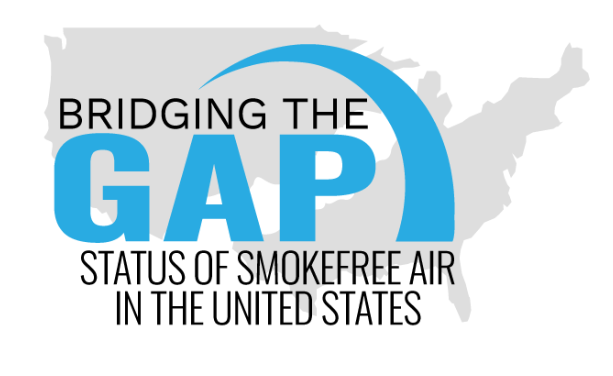None of the population of Oklahoma is covered by a smokefree Workplace, Restaurant, and Bar law.
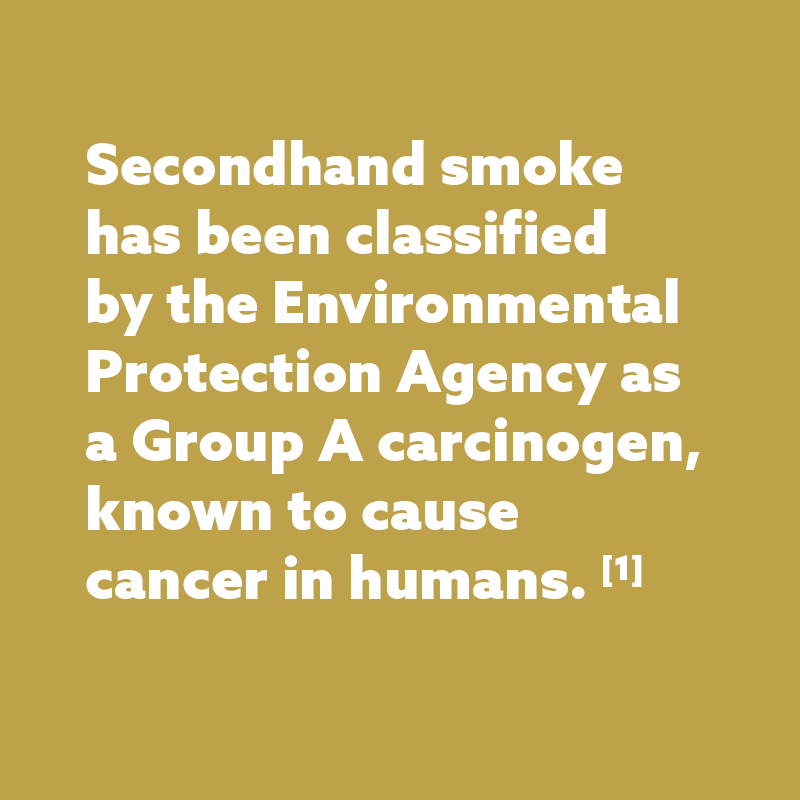
Oklahoma, the Great Plains state, ranks 18th in size among the 50 U.S. states and 28th in population with 3,931 million residents. It is also home to 39 sovereign Tribal nations. In 1987, a weak statewide smokefree law went into effect that required the inclusion of smoking sections in restaurants and preempted stronger local smokefree laws. In 2003, the state law was amended to prohibit smoking inside most public places; however, several places are exempt from this rule, including bars and clubs. Thousands of workers continue to be exposed to secondhand smoke in exempted venues including smoking areas of restaurants, bars, private clubs, and casinos. Sovereign Tribal nations are exempt from state law and have the authority to adopt smokefree and tobacco-free policies for their nations.
- 62.3% of Americans enjoy comprehensive smokefree protections in all public places and workplaces, including restaurants and bars. In contrast, in Oklahoma 0% of the population is protected by this type of smokefree law. [2]
- Oklahoma is 1 of 10 “Most Challenged” states based on health outcomes according to the United Health Foundation’s “America’s Health Rankings Annual Report,” ranking 46th out of 50, and 42nd for Non-smoking Regulations. [3]
- Oklahoma has the 3rd highest chronic obstructive pulmonary disease (COPD) rate in the nation. [4]
- Only 59 of the approximately 146 college campus sites in the state are 100% tobacco-free. [5]
- Oklahoma has more Tribal casinos than any other state in the nation and yet only 20 out of 143 Tribal casinos are smokefree. These 20 smokefree casinos are operated by Kiowa, Choctaw and Fort Sill Apache Nations. Casino workers in the remaining 123 Tribal casinos across the state are still exposed to secondhand smoke.
Preemption Status:
Preempted
No Local Control
Preemption refers to situations in which a law passed by a higher level of government takes precedence over a law passed by a lower one. Preemption is a tobacco industry tactic that removes a community’s right to enact local smokefree air laws. Oklahoma has been stymied since 1987 by broad preemption rules. Private businesses can adopt a policy designating their business as smokefree, but municipalities are not able to pass a city-wide law prohibiting smoking in workplaces, restaurants, and bars.
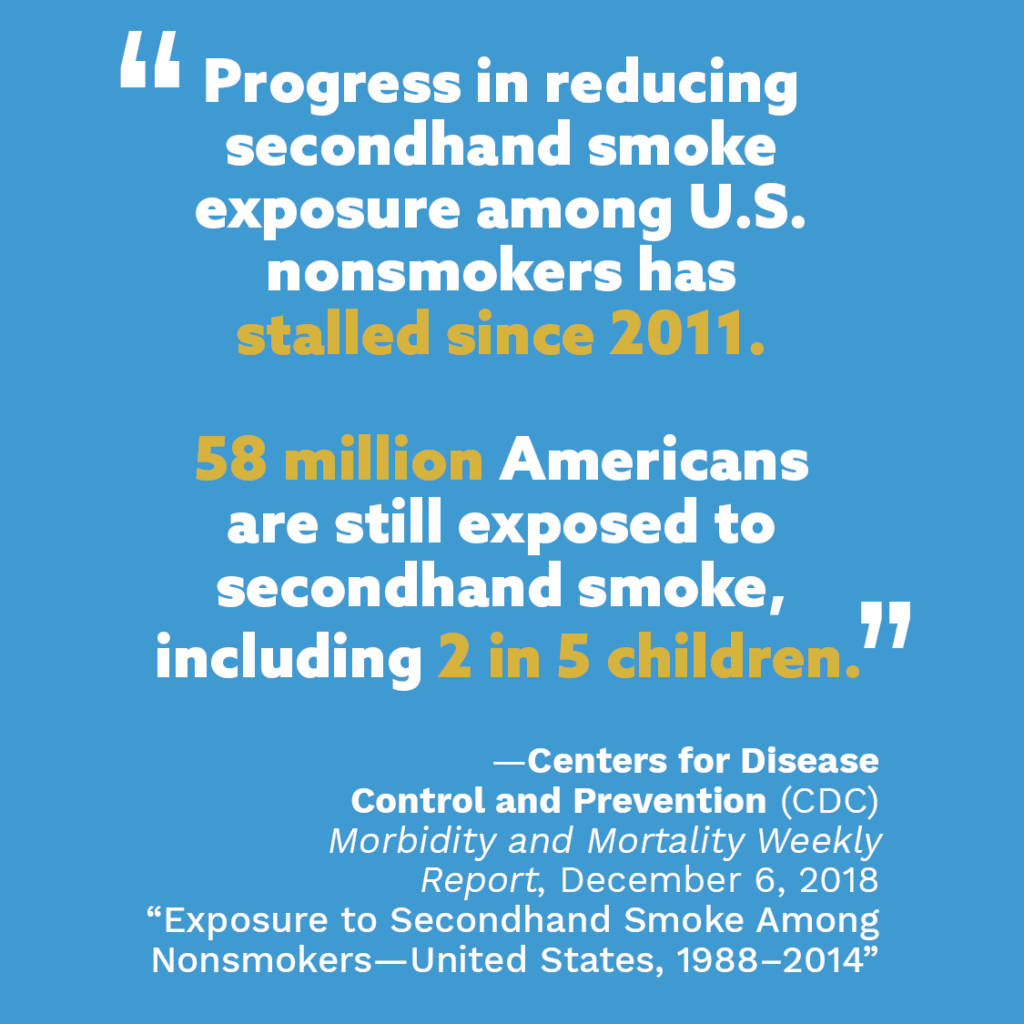
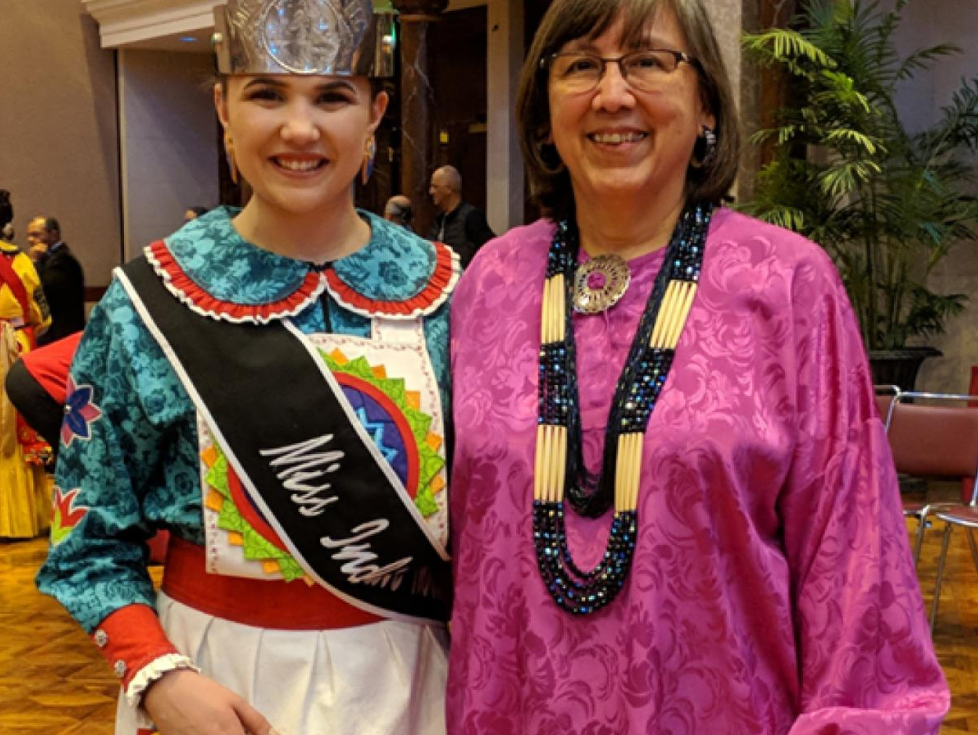
Current Landscape of Smokefree Protections
Implications of Preemption
No one in Oklahoma is protected by a 100% smokefree workplace, restaurant, and bar law. Oklahoma stands out among its neighboring states, many of whom have strong local and statewide smokefree laws.
Preemption: The Tobacco industry’s #1 opposition tactic against smokefree protections
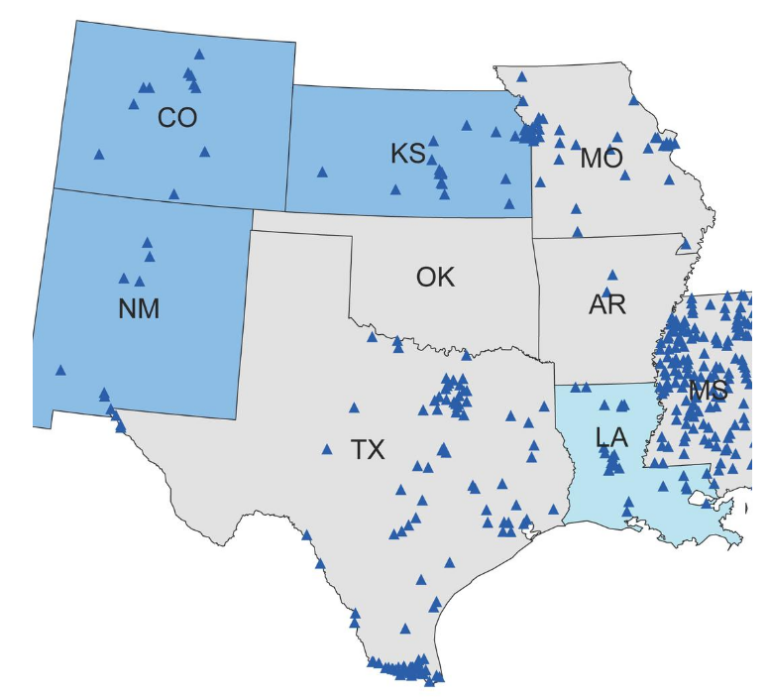
The triangles on the map represent municipalities with laws requiring 100% smokefree workplaces, restaurants, and bars. At the state level, blue represents a statewide law requiring 100% smokefree workplaces, restaurants, and bars and turquoise represents state laws requiring one or two of those components; grey represents no 100% smokefree provisions. Note that the map does not reflect American Indian sovereign Tribal policies.
Because state law preempts local smokefree law-making in Oklahoma, it has fallen behind the rest of the nation in health protections from secondhand smoke. If the Sooner State is to remain competitive with other states in the region, it needs to focus on improving living standards to attract and retain the best talent and keep them healthy. Reversing preemption and restoring local control allowing municipalities to pass strong workplace, restaurant, and bar policies could dramatically improve public health.
Who is left behind?
Nearly 4 million Oklahoma residents are left unprotected from exposure to secondhand smoke in workplaces and public places due to the lack of any 100% comprehensive smokefree laws.
Oklahoma has 143 Tribal gaming facilities, which employ more than 65,000 people. Non-Tribal citizens hold 60% of these positions; 40% of positions are held by Tribal members. Twenty-nine percent of the Tribal employees work for their own Tribes and 11% work for another Tribe. Overall, women account for 54% of the state’s casino employees. [6] Only 20 of the 143 casinos in Oklahoma are smokefree, thus exposing thousands of employees, patrons, and visitors to secondhand smoke on a daily basis.

Workers in Oklahoma are Suffering in Secondhand Smoke
Casino Workers are Exposed to Secondhand Smoke
Women account for 54% of Oklahoma's Casino Employees
Poor Health Outcomes and High Costs
Tobacco use is the leading preventable cause of death in the United States. More than 480,000 people die from smoking or exposure to secondhand smoke each year. [7]
The smoking rate among adults is 20.1% and 12.5% for high school students, compared to national rates of 14% and 8%, respectively. [8] Commercial tobacco use among the Native American Indian population remains higher than any other racial group.
Tobacco use exacts a high toll. Healthcare costs attributed to tobacco use in Oklahoma amount to $1.62 billion annually, and the portion covered by Medicaid is $264 million. [8]
Secondhand smoke exposure causes heart disease, stroke, and lung cancer among adults, as well as respiratory disease, ear infections, sudden infant death syndrome, more severe and frequent asthma attacks, and slowed lung growth in children. [7,9]
Beyond secondhand smoke exposure, nonsmokers exposed to thirdhand smoke in a casino are at an ever higher risk than those in a thirdhand smoke-polluted home. [10] Further, hospitality workers and children are susceptible to thirdhand smoke exposure, as the particles cling to hair, clothing and cars. Young children are particularly vulnerable, because they can ingest tobacco residue by putting their hands in their mouths after touching contaminated surfaces. [11]
Smokefree laws help to reduce adult smoking prevalence and prevent youth and young adult smoking initiation. [7,9]
Sovereign Tribal Policy Development
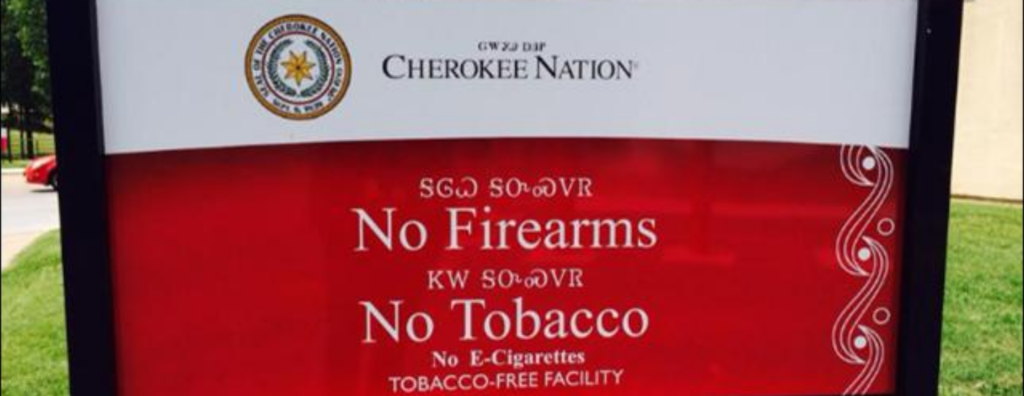
While the Oklahoma state law preempts municipalities from adopting local smokefree laws, sovereign Tribal nations are exempt from this rule. Thirty-nine Tribes call Oklahoma home, and several have taken a leadership role to protect their Tribal members by creating smokefree environments. For example, Cherokee Nation has one of the strongest smokefree policies in the state. All Cherokee Nation Tribal workplaces, government buildings, schools, parks and other public places including outdoor Powwows are smokefree (with the exception of use of sacred tobacco for traditional, ceremonial purposes). The only exclusion to the policy is for the casinos. In fact, none of the Tribes in Oklahoma have adopted a policy making their casinos 100% smokefree indoors to date.
The People of Oklahoma Support Smokefree Air
A recent poll showed that over 70% of the population supports smokefree and other tobacco control policies. [12]
In 2018 approximately 70% of the legislature were new, and two of the three candidates for governor had publicly voiced support for smokefree protections for all workers.
A statewide coalition is forming that includes major health organizations in Oklahoma that are supportive of a smokefree law statewide that includes all workplaces, restaurants, and bars. Many new partners in the business community and the music industry are showing up to the table, ready to engage and discuss a smokefree statewide campaign, and partner strategy meetings were held in 2018 to draft a plan of action.
Demand for smokefree workplaces has never been higher. Local control should be restored so municipalities can enact strong, simple, and fair laws that protect all workers and patrons. Tribes and colleges have made progress in smokefree protections; it’s time for all workplaces to eliminate exposure to secondhand smoke.
The state’s motto Labor Omnia Vincit, or 'Labor Conquers All Things,' has special significance, when we consider the challenges ahead to close gaps in smokefree protections.

In Oklahoma, approximately 1 in 6 people are economically disadvantaged and do not have health insurance, thereby increasing their risk for health problems. The median household income is $48,038 with a per capita income from the past 12 months (in 2016 dollars) of $25,628. This translates to a high rate of people living in poverty (15.8%). 11.3% of the population under age 65 years has a disability. [13] The tobacco industry has a long history of targeting low-income communities. Those who live in low-income communities have the least access to health care and information about the health hazards of secondhand smoke exposure, the fewest resources and social support systems, and are the most marginalized people impacted by this social justice issue. [14]
Gaming in Oklahoma
Casinos, race tracks and other gaming establishments are workplaces as well as public places and should also be smokefree. In response to the COVID-19 pandemic, numerous Tribes, including Cherokee Nation, Comanche Nation, Choctaw Nation of Oklahoma, and Kiowa Tribe of Oklahoma, made the sovereign decision to implement smokefree indoor air policies for some or all of their gaming venues. At least 32 Tribal gaming venues in Oklahoma became smokefree in 2020. There are at least 148 gaming establishments in Oklahoma, and 34 are 100% smokefree. See the ANR Foundation Smokefree Casinos and Gaming Property Directory for Oklahoma.
Webinar recording available: Smokefree Casinos in Oklahoma Are OK (presented in collaboration with National Native Network Oct 2020).
First of its kind study demonstrates that casino visitors, even current smokers, desire smokefree spaces.
“When smoking is allowed in indoor areas of casinos, millions of nonsmoking casino visitors and hundreds of thousands of employees can be involuntarily exposed to secondhand smoke and related toxicants.” [15]
—Office on Smoking and Health, Centers for Disease Control and Prevention
A recent study found that 75% of U.S. adults who visit casinos favor smokefree casinos.
No prior studies have exclusively assessed adult attitudes toward smokefree casinos in the United States.
This study found very high favorability among those age >64 (81.6 %), college educated (81.7%), and higher income (79.1/80.8%). Smokers made up 13% of the sample, and, of those smokers, nearly half (45%) supported smokefree casinos. [15]
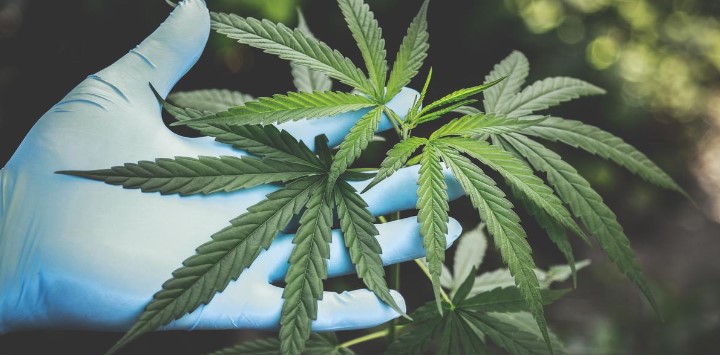
New Potential Challenge: Secondhand Marijuana Smoke
Oklahoma constituents passed State Question 788 to legalize the medical use of marijuana in June 2018. Secondhand marijuana smoke is a health hazard for nonsmokers. Just like secondhand tobacco smoke, marijuana smoke is a potent source of PM 2.5 fine particulate matter. Marijuana secondhand smoke impacts cardiovascular function; it contains thousands of chemicals and at least 33 carcinogens.
COVID Reminds Us That Health Promotion Policies Matter
Smoking and vaping, along with exposure to secondhand smoke and aerosols, negatively impact the respiratory system and may cause a person’s immune system to not function properly, known as being immunocompromised. Research demonstrates that current and former smokers of any age are at higher risk of severe illness from coronavirus disease (COVID) in part due to compromised immune and/or respiratory systems. Smoking leads to cardiovascular disease, as well as respiratory illnesses including bronchitis, asthma, Chronic Obstructive Pulmonary Disease (COPD), and lung cancer as a result of exposure to particulate matter, toxins, and carcinogens into their lungs. Secondhand tobacco and marijuana smoke and aerosol contain many of the same toxins, carcinogens, and particulate matter that lead to respiratory and cardiovascular diseases.
Removing masks to smoke or vape indoors undermines the proven benefit of face coverings and increases the risk of transmitting or inhaling COVID via infectious respiratory droplets, uncovered coughs, and increased touching of faces. Preventing exposure to secondhand smoke and e-cigarette aerosol or vape by adopting a smokefree policy with no smoking or vaping indoors and moving smoking or vaping to socially distanced outdoor areas away from entrances, could help mitigate worker and public exposure to carcinogens and toxins, as well as COVID.
Just as social distancing and handwashing help prevent the spread of disease, eliminating secondhand smoke is critical to prevent acute and chronic diseases, and saves lives by reducing the risk of heart disease, stroke, respiratory diseases, and lung cancer by up to 30% at a population wide level.
Going smokefree prevents exposure to the carcinogens and toxins in secondhand tobacco and marijuana smoke as well as dramatically reduces the spread of respiratory droplets that could transmit flu and other viruses like COVID.
Strategies to Close Gaps & Increase Health Equity
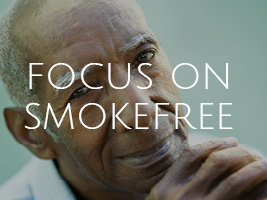
Focus on smokefree policies: Competing issues can distract and delay work on smokefree policies. Smokefree laws have immediate and long-term health and economic benefits, and they are worth the investment of time and effort to protect everyone from exposure to a known human carcinogen. [7]

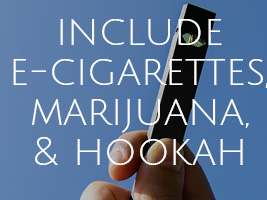
Adopt a statewide smokefree law: Since communities in Oklahoma are preempted from adopting strong local smokefree laws, efforts should be focused on the legislature to adopt a comprehensive 100% smokefree workplace law that includes restaurants, bars, and state-regulated gaming. Smokefree laws should also prohibit the use of e-cigarettes, marijuana, and hookah to prevent secondhand smoke exposure to the toxins, carcinogens, fine particles, and volatile organic compounds that have been found to compromise respiratory and cardiovascular health. [16,17]
Statewide campaigns are always a challenge given the influence of the tobacco industry in state legislatures. In addition, the state’s diverse population and newness of the legislature and governor, coupled with the state’s high smoking rates, make statewide organizing a challenge and will require ample human and financial resources. A statewide campaign would require all partners to buy into a well thought out strategic plan that includes highly professional strategic organizing and a paid media campaign. The campaign should underscore worker health and health equity, and emphasize broad public support for the measure, highlighting the economic benefits of going smokefree. Since the state recently legalized medical marijuana, there has been increased awareness of marijuana smoking (and vaping) in public. The timing is right for educating the state legislature about both marijuana and tobacco smoking/vaping and to close gaps in smokefree air protections in Oklahoma’s clean indoor air law.

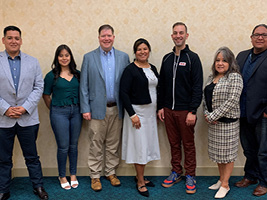
Recruit new partners: In order to grow smokefree campaigns to the next level, new partners need to be recruited to publicly demonstrate support for smokefree environments. Social justice organizations and those committed to health care access and ending homelessness can be recruited to the smokefree movement in Oklahoma, knowing that their constituent populations are working in smoke-filled worksites across the state. Faith-based institutions, unions, and chambers of commerce are important voices for the fight for smokefree worksites for all workers. In addition, many Country and Western musicians call Oklahoma home, and these performers can bring significant support for smokefree venues.
Native American Tribal partners should be included in any smokefree effort to demonstrate the shared interest and goal of protecting everyone from secondhand smoke. A resolution of support campaign, such as one conducted in Alaska where 107 Alaska Native Tribes signed resolutions in support of a smokefree statewide law, could prove helpful in Oklahoma too.
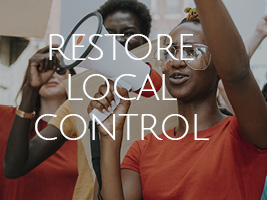
Alternatively, repeal preemption and restore local control: There have been several successful preemption repeal campaigns that have restored local authority to adopt smokefree laws at the municipal level. Local control and increasing civic engagement is at the heart of our broader goal of educating the public about the health effects caused by secondhand smoke and changing attitudes regarding smoking in ways that harm other people.
Delaware was the first state to repeal preemption and simultaneously adopt a law that made all workplaces, including casinos, 100% smokefree in 2003. Other examples include Illinois, which repealed preemption in 2006. The following year, over 30 Illinois municipalities enacted local smokefree laws. The state then adopted a law that went into effect in 2008 making all workplaces, including casinos, 100% smokefree.
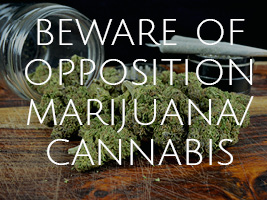
Beware of opposition from cannabis/marijuana proponents: Oklahoma legalized medical cannabis in June 2018; by October 2018 dispensaries began selling marijuana. States that legalize medical marijuana typically go on to legalize recreational, adult use marijuana after a few years. Marijuana smoke is also a form of indoor air pollution and a hazard to nonsmokers’ health. In order for indoor workplaces and public spaces to truly be safe and healthy environments, tobacco and marijuana smoke, along with secondhand e-cigarette aerosol/vapor should be prohibited.

Invest in the future: In order to address the gaps in smokefree coverage, a great deal of effort and financial resources will be required to explain the ongoing disparities in smokefree protections and the benefits of 100% smokefree environments, and to counter misinformation about the viability of ventilation systems to protect people from secondhand smoke exposure. Collaborating with and mobilizing additional community-based partners who represent those individuals or specific classes of workers being left behind is critical to reach success.

Increase funding and resources: Tobacco prevention, education, training, and cessation funds are needed to better address disparities in smoking and exposure to secondhand smoke. In addition, funds to support the implementation of a statewide law are critical to increase community awareness of and compliance with the smokefree rules.
Oklahoma Families Deserve Smokefree Air
Sources of data:
- “U.S. Environmental Protection Agency, Respiratory Health Effects of Passive Smoking: Lung Cancer and Other Disorders,” EPA/600/6-90/006F, December 1992.
- American Nonsmokers’ Rights Foundation. (2022). U.S. Tobacco Control Laws Database. Berkeley, CA.
- United Health Foundation. (2021). America’s Health Rankings Annual Report.
- Centers for Disease Control and Prevention, National Center for Health Statistics. Underlying Cause of Death 1999-2016, December, 2017.
- American Nonsmokers’ Rights Foundation. U.S. College Campus Tobacco Policies Database© , Berkeley, CA, 2022.
- The Economic Impact of Tribal Gaming, December 2017.
- US Department of Health and Human Services. The health consequences of smoking: 50 years of progress. A report of the Surgeon General. Atlanta, GA: US Department of Health and Human Services, CDC; 2014.
- Centers for Disease Control and Prevention. (n.d.). State Highlights: Oklahoma [from State Tobacco Activities Tracking and Evaluation System].
- US Department of Health and Human Services. Preventing tobacco use among youth and young adults. A report of the Surgeon General. Atlanta, GA: US Department of Health and Human Services, CDC; 2012.
- Matt, Dr. Georg (2018). Smoking Bans May Not Rid Casinos of Smoke. US News and World Report.
- Matt, G E, Quintana PJ E, Hovell MF et. al. (2004). Households contaminated by environmental tobacco smoke: sources of infant exposures. British Medical Journal: Tobacco Control.
- Tobacco Settlement Endowment Trust (TSET). Tobacco Control Policies Saves Lives. CHS & Associates Research Survey, 2017.
- U.S. Census Bureau QuickFacts: Oklahoma.
- Centers for Disease Control and Prevention, Oklahoma: Planning for Health Equity.
- Michael A. Tynan, BA1 ; Teresa W. Wang, PhD1; Kristy L. Marynak, MPP1; Pamela Lemos, MS1; and Stephen D. Babb, MPH1, Attitudes Toward Smoke-Free Casino Policies Among US Adults, Centers for Disease Control and Prevention Office on Smoking and Health, Public Health Reports, 2017 [accessed 2019 Mar 21].
- Grana, R; Benowitz, N; Glantz, S. “Background Paper on E-cigarettes,” Center for Tobacco Control Research and Education, University of California, San Francisco and WHO Collaborating Center on Tobacco Control. December 2013.
- Williams, M.; Villarreal, A.; Bozhilov, K.; Lin, S.; Talbot, P., “Metal and silicate particles including nanoparticles are present in electronic cigarette cartomizer fluid and aerosol,” PLoS ONE 8(3): e57987, March 20, 2013.
Related Reading:
Huang, J., King, B.A., Babb, S.D., Xu, X., Hallett, C., Hopkins, M. (2015). Socio-demographic disparities in local smokefree law coverage in 10 states. American Journal of Public Health, 105(9), 1806–1813.
Tynan, M.A., Baker Holmes, C., Promoff, G., Hallett, C., Hopkins, M., & Frick, B. (2016). State and local comprehensive smoke-free laws for worksites, restaurants, and bars — United States, 2015. Morbidity and Mortality Weekly Report, 65(24), 623-626.
American Gaming Association. (September 2018). State of the States: The AGA Survey of the Casino Industry.
Rhoades, R. and Beebe, L. Tobacco Control and Prevention in Oklahoma: Best Practices in a Preemptive State. American Journal of Preventive Medicine. (January, 2015)
[n.a.], “Tobacco industry interference with tobacco control,” Geneva: World Health Organization (WHO), 2008.
NCI Monograph 17: Evaluating ASSIST – A Blueprint for Understanding State-level Tobacco Control Evaluation of American Stop Smoking Intervention Study for Cancer Prevention Chapter 8, Evaluating Tobacco Industry Tactics as a Counterforce to ASSIST (October 2006).
July 2022
